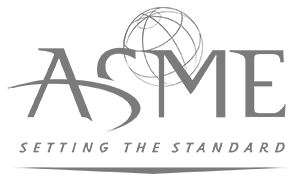What is the Difference Between EN 10204 3.1 and 3.2 Inspection Certificates?
When purchasing steel products, metal manufacturers should release the MTC (Mill Test Certificate) to the buyer. The MTC contains all specifications of steel products including weight, dimensions, chemical composition, mechanical strength, heat treatment status, test results, traceability, etc. This information is to ensure that a certain standard of quality for steel products has been met.
In Germany, inspection documents and certifications were originally specified in the DIN 50049 standard. The definitions of material testing and certificate types in DIN 50049 was eventually adopted for the European standard EN 10204, first published in 1991. Certificate types 2.1, 2.2, 2.3, 3.1A, 3.1B, 3.1C, and 3.2 were defined, closely following the definitions in the German standard.
EN 10204 was revised in 2004 and published as BS EN 10204:2004, Metallic Products—Types of Inspection Documents, with a simplified range of inspection documents (certificate types). These now only include types 2.1, 2.2, 3.1 and 3.2. Type 2.3 has been deleted, Type 3.1 replaces 3.1B, and Type 3.2 replaces 3.1A, 3.1C and 3.2. A brief overview of each of the BS EN 10204 certificate types is shown below:
|
Certificate Type |
Title |
Summary of EN 10204 Requirements |
| 2.1 | Declaration of Compliance with the Order | Statement of compliance with the order by the manufacturer. |
| 2.1 | Test Report | Statement of compliance with the order by the manufacturer based on non-specific inspections (tests) by the manufacturer. |
| 3.1 | Inspection Certificate | Statement of compliance with the order by the manufacturer with results of specific inspection |
| 3.2 | Inspection Certificate | Statement of compliance with the order with indication of results of specific inspection |
The standard is usually applied to metal produced by mills in the form of metal bars, plates, tube, etc. The standard can also be adapted to products manufacturers from such material such as valve bodies, flow meter casings, pressure gauges, etc. Of the 4 types for EN 10204, the latter two types are the most widely used in steel products.
Differences between 3.1 and 3.2
The EN 10204 Type 3.1 Inspection Certificate are actual test results from the material in the lot from which the steel products have been supplied (formally referred to as “specific testing”). A 3.1 Inspection Certificate is endorsed only by the manufacturers own representative who has to be independent from the manufacturing process, such as the Quality department or a test house manager/supervisor.
The EN 10204 Type 3.2 Inspection Certificate is similar to the 3.1, but has additionally been countersigned and verified by an independent third-party to validate the material by way of verification test. When the 3.2 certificate type is requested the manufacturing mill may prepare a 3.1 type certificate to present to the ‘outside inspector’ to use as a basis for preparing the independent 3.2 certificate.
With a wide offering of sanitary process components, Holland Applied Technologies is familiar with the requirements of a Type 3.1 inspection certificate and we understand its importance to our customers. While the 3.2 certificate is rare due to the higher cost, it provides independent assurance of a material’s properties. If you need more help understanding your 3.1 certificate, or simply need help retrieving a certification for a component you’ve purchased previously, contact a Holland Sales Engineer today.







